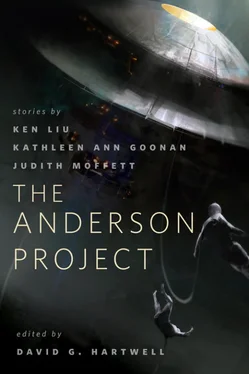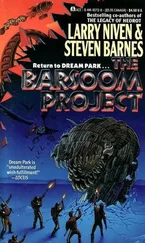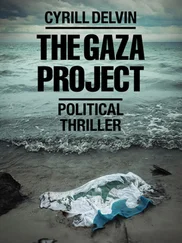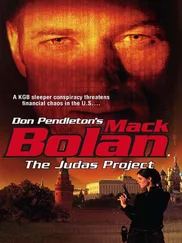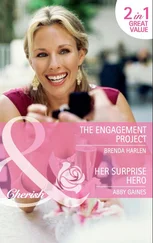He made it sound like a done deal. Everyone felt the incubated dreams gave them reason to be optimistic about the outcome. And not just the bottle of medicine and the doctors’ assurances of a cure. David had failed to catch the fly ball, but his team was still winning. The flood waters were receding. Josh’s teacher did have a hopeful name. Rick was going to do a dream reentry and break free of imprisonment. But when they looked carefully at the dreams, there seemed to be just as many reasons to be worried, probably more.
* * *
It took NASA a year to find the asteroid, a previously undiscovered one and on the small side as asteroids go. If they hadn’t been looking for it, they would almost certainly not have found it in time to respond. To be ordered to look for a particular rock wandering around somewhere out in space, on the say-so of a bunch of kids from the Center for Dream Research, was viewed by many as a very bad joke, and during that initial year the grumbling was considerable.
Then one day the people in the Near-Earth Object Office found what they’d been looking for. The grumbling stopped. They gave the asteroid a provisional designation, 2034 KW3, and a respectful nickname, “The Gallstone,” and set about confirming its orbit and devising a plan to modify that orbit. The approach was one Professor Manning had described to Josh’s class: NASA would launch a “gravity tractor,” in the form of a robotic probe, to rendezvous with The Gallstone and travel along with it. Over time, the tug of the tractor’s gravity would affect the trajectory of the asteroid enough to let it pass harmlessly by the Earth, thus averting catastrophe. That was the method of choice, as it had been employed a number of times already with good results.
But to be on the safe side, NASA also prepared a backup plan, on the unlikely chance that the gravity tractor failed to work. This was an experimental approach known as “mirror bees.” A swarm of small spacecraft would be launched at The Gallstone, each with mirrors on its surface. When the probes reached the asteroid, the mirrors would focus reflected sunlight at a designated spot on the asteroid. The effect would be to make the spot so hot that some of the rock or ice would be vaporized, and the ejecta would act like propulsion jets, pushing The Gallstone off its original course.
When Josh heard about the mirror bees, he got out his painting again. Then he called Bob Christian. “Something’s going to go wrong with the gravity tractor,” he said. “What’s going to work is the backup plan, the mirror bees. Plan B-e-e and Plan B, like on Jen’s medicine bottle. If you’ve still got a scan of that old picture, check it out—or I can send it over.”
“Printout on my wall. I’m looking at it.”
Josh described the mirror-bee strategy. “See what I mean? You have to start from scratch and assign different roles and meanings to everything, but it all makes sense. Finally.”
“So you think it’ll work?”
“Sure it’ll work!” And then, “At least I’m as sure as it’s possible to be about anything, when the probabilities haven’t actually collapsed yet. Aren’t you?”
“As a matter of fact,” Bob said, “I am.”
* * *
On July 7, 2047, the Center for Dream Research threw a spectacular party for Bob Christian’s famous Spring ‘44 Dream Interpretation class. Everyone in the class had graduated by then, but five were still at the Center doing graduate work, and Yancey and David had come back from their assignments to watch the flyby and celebrate along with the others. Josh’s brother Tim had driven down from MIT for the occasion, and their parents had flown in from California. NASA had provided a terminal and a link to Hubble III. The rest of the world would see the footage on the evening news, but everyone at the Center, like everyone at NASA, got to watch it live.
In the months after the gravity tractor had lost propulsion, and before the mirror bees had reached their target, Center staff and students had monitored, not just their own dreams, but also the online dream sites, nervously anticipating a tsunami of dreams about shattered mirrors and bee catastrophes. It didn’t happen. Nor had anyone at the Center dreamed about tractors or bees. “I told you,” Josh had said to Bob Christian. “Precognitive dreams foretell disasters. There isn’t going to be one.”
And there wasn’t one. Everyone cheered as The Gallstone zipped harmlessly between the Earth and the moon, thirteen thousand miles above Santa Barbara (and, incidentally, above Pasadena and the Jet Propulsion Lab, which would have been devastated had the asteroid come down in the Pacific). Champagne appeared. Live music, amplified, streamed from walls and ceiling. Reporters pushed in to interview members of the class. On the big screen a blowup of Josh’s painting “Space Ballet” replaced the flyby. Someone from NASA made a speech. After years of being the object of jokes by the hosts of talk shows, the Center was experiencing the heady glamour of public approval and gratitude, not to mention assured funding for the foreseeable future. It was quite a party.
After the speech a reporter buttonholed a black-haired grown-up Josh, in jacket and bolo tie, and waved one arm at the gigantic picture on the screen. “Josh, can you tell us why it was so hard to interpret that dream of yours? One of your friends was saying how you had to try several different approaches before the class managed to figure it out. Nice painting, by the way.”
“Thanks. Well. See, the thing about dreams, they’re packed with information, but they typically deliver the information in a weird symbolic language that can be very hard to understand. If dreams were more straightforward, we wouldn’t have to go to school for years to learn how to interpret them. And this dream wasn’t straightforward at all, so it took us a while.” Behind the cameraman, Tim was jumping up and down and making faces at him. Emily stood next to him, laughing at Josh’s discomfort. She had cut her hair. He attempted to edge away.
“Interesting,” said the reporter briskly. “Now, what are some of the symbols in the dream you painted?”
“Well”—Josh threw a pleading glance at Bob, who shrugged and grinned—“everything in it, really. The ship, the people, the black things with faces, the light, the cables—”
“Now, which of those would be The Gallstone?”
“We didn’t know any of them was The Gallstone for a while! In the dream, that little black thing like a shuttle, under the ship, seemed frightening, so the first thing we did was try to figure out why.”
She craned her neck to peer up at the screen. “So The Gallstone is that little black thing with the face?”
“Well, you could say—on one level you could say so, but that’s not all it turned out to be. See,” Josh said desperately, “dreams can be very ambiguous, objects can symbolize several things at the same time. You have to be careful not to rule things out.”
Again he cast a beseeching look at Bob, who now took pity on him and came to the rescue. “An article about Josh’s dream was posted to the Center’s website this morning,” he told the reporter. “It reads like a detective story—your viewers will enjoy it. The article describes the entire interpretive process and what everyone contributed. You’ll find answers there to all these questions and lots of others. Meanwhile, this is Josh’s big day. Why don’t we let him enjoy the party?”
The reporter turned eagerly on Bob. “You’re a professor here at the Center?” She glanced at his name tag. “Oh, Professor Christian! This is the teacher of Josh’s class, the class that helped interpret his dream! Wonderful to see you! I’m sure our viewers would love to know more about how you dreamers get your results, if could you give us just a hint—”
Читать дальше
